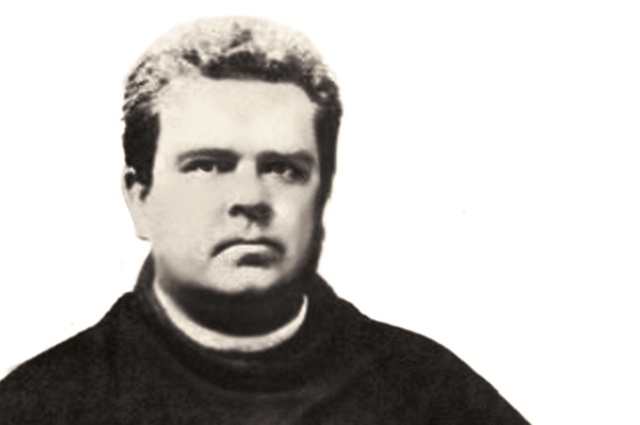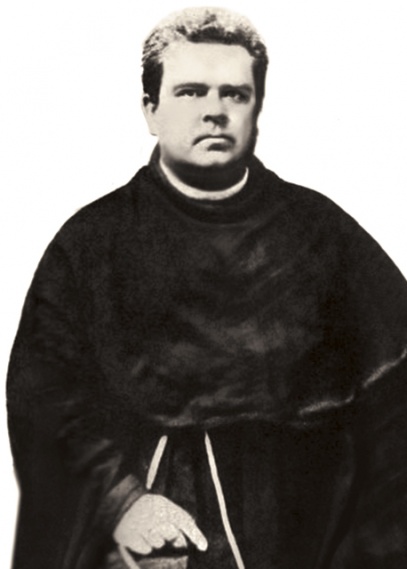Being a pioneer is not always everything it is cracked up to be. Sometimes there is a psychic price to be paid for posterity, a surcharge that history applies to those who dare to venture where others dare not. Father Leopold Moczygemba, who founded the country’s first Polish community, the first Polish Catholic school and consecrated the first Polish Catholic Church, was one person who had to pay a price in his own time for an honored place in history. It took about 120 years for Texans to get around to officially thanking Moczygemba for all his work, but we realize now that there is not much to be done about rattlesnakes and droughts.
The consecration of the church occurred in September 1856 under a spreading live oak tree near the confluence of the San Antonio River and Cibolo Creek. The community that Moczygemba founded there was called Panna Maria, Polish for Virgin Mary. Most of those who attended were newcomers who had recently emigrated from Silesia seeking a better life. At that point, they weren’t sure they had found it. Many had come at the urging of Father Moczygemba, one of five Catholic priests chosen by Bishop Jean-Marie Odin of Galveston to work in Odin’s sprawling diocese, which covered all of Texas. Moczygemba arrived in Galveston in 1852. He was first assigned to a New Braunfels parish as a resident pastor but was in Castroville when immigrants from Silesia began arriving in 1854.
Upper Silesia, where Moczygemba grew up, had been under Prussian rule since 1742, but the region’s peasants maintained their Polish language, traditions and faith. Moczygemba wrote letters back to Silesia, encouraging people to come to this new world of freedom and abundance. Other Silesian letter writers talked of free land, fertile fields and even golden mountains, which we suspect was lifted from earlier descriptions of California. One letter writer described Texas as “a land without winter.”
The situation in Poland, complete with floods, a bad economy and epidemics of typhus and cholera, made for attentive readers. Hundreds of Polish immigrants set sail for Galveston in 1854 and arrived on December 3. Moczygemba wasn’t there to meet them as they had expected, so they traveled to San Antonio, walking and riding in ox-pulled carts. Moczygemba hurried to greet them there and take them to their new home. The settlers were taken aback by what they found at Panna Maria, which wasn’t much. Moczygemba had unwittingly chosen a place that rattlesnakes had already claimed as a nesting site, sort of a viper metropolis among the brush and mesquite. The settlers arrived on Christmas Eve, so Moczygemba conducted a Christmas Mass and thanksgiving ceremony, which turned into a plea for perseverance and guidance in their harsh new world.
One Silesian wrote of the early struggles: “What we suffered here when we started! We didn’t have any houses, nothing but fields. And for shelter, only brush and trees. There was tall grass everywhere, so that if anyone took a few steps, he was lost from sight. Every step of the way you’d meet rattlesnakes. And the crying and complaining of the women and children only made the suffering worse. How golden seemed our Silesia as we looked back in those days!”
Moczygemba hosted a reconciliation banquet at his home where the settlers were allowed to air their complaints. Just as everybody settled down to dinner, a rattlesnake fell from the rafters onto the table, which pretty much put reconciliations on hold.
Moczygemba organized the building of a church at the site around 1856, and a barn served as the country’s first Polish school. The winter of 1856-57 was cold and wet, which delayed planting, but it didn’t matter because an extreme drought hit that spring; it didn’t rain in Panna Maria for 14 months. Wells dried up, the earth cracked and livestock perished.
The settlers directed their frustration toward Moczygemba, whose life was threatened, though there was disagreement as to whether he should be hanged or drowned. Moczygemba retreated first to Castroville and then to other states, serving Polish communities in Wisconsin, Illinois, Indiana, Michigan, Missouri and New York for the rest of his life. He is best known as the cofounder of SS. Cyril & Methodius Seminary in Orchard Lake, Michigan. He died in Michigan on February 23, 1891.
On October 13, 1974, his remains were re-interred at Panna Maria under the oak tree beneath which he had offered Mass for the first arriving Polish immigrants 120 years earlier. A monument was erected at the site honoring him as the “Patriarch of American Polonia.”
Fortunately, rattlesnakes were nowhere to be seen this time.
——————–
Clay Coppedge, frequent contributor



